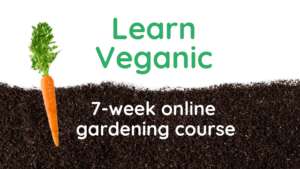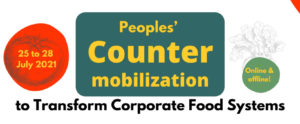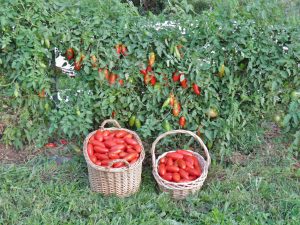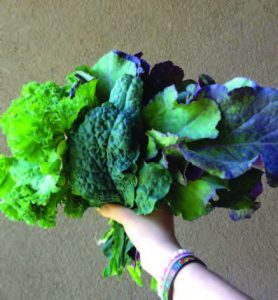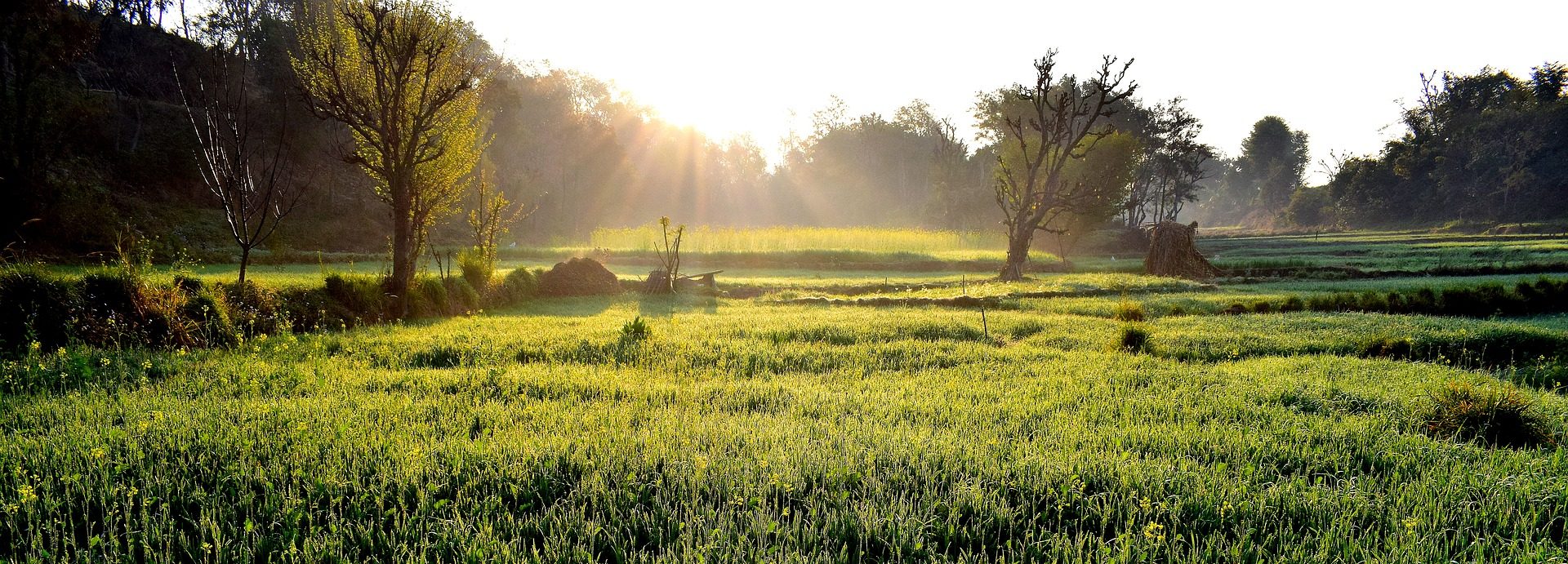
World Soil Day Should Be a Call to Change How We Grow Food
By Nassim Nobari, first appeared on seedthecommons.org/blog.
The world is teetering on the brink of environmental catastrophes, including global warming and biodiversity collapse, that are spoken about but not tackled with the urgency they require. The solution starts right below our feet: our soil. Rebuilding this precious resource should be one of our first priorities, yet we are locked into a system that is rapidly eroding our topsoil, putting at risk the ecosystems that maintain life and our ability to grow food. While the corporate sector pushes for tech solutions and the environmental sector focuses more often on fossil fuels, agriculture is still not sufficiently spoken about in climate discussions. December 5 was World Soil Day, which should galvanize us all to play a part in wresting our food systems from harmful industries and growing alternatives that are based on resilient and regenerative farming systems so as to restore the soil and the life webs it supports.
Our corporate food regime, based on industrial agriculture, is not only a significant producer of greenhouse gas emissions but also drives the degradation of the soil so necessary to sequestering those emissions and maintaining thriving ecosystems, such as forests, that are also lungs of our planet. But while agriculture is the problem, it is also the solution. We should be looking to it not merely as a harm to be reduced through better practices, but as a cornerstone of our efforts to restore ecosystems and soils. This is why Seed the Commons has been focusing on issues around soil health and restoration in our new webinar series, Rethinking Food and Agriculture in a Time of Covid and Climate Change.
The series was launched on World Food Day 2020 with a conversation with Drs. Laila and Amir Kassam, the editors of the groundbreaking new book, Rethinking Food and Agriculture: New Ways Forward. Dr. Amir Kassam is an expert in Conservation Agriculture and the Moderator the FAO-hosted Global Platform for Conservation Agriculture Community of Practice. He has worked with farmers around the world to help them transition to Conservation Agriculture, which is a farming system that protects and rebuilds topsoil and restores soil biodiversity primarily through the context-specific application of the principles of minimal soil disturbance (no till), soil mulch cover and diversified cropping.
In a following webinar, we were joined by Sydney Grange of The Victory Gardens for Peace Initiative, a project of the Biointensive training and research center Ecology Action. The Biointensive “mini-farming” method was created by Jon Jeavons with the goal of growing complete diets in a highly efficient manner, using as little land and resources as possible. One of its principles is to create closed-loop systems for self-sufficiency and independence from our fossil-fuel based system, making it truly sustainable as one doesn’t need to mine resources from one location to produce food in another. This method goes beyond sustainability however–Biointensive farming has been found to build soil up to 60 times faster than in nature! It achieves this by allotting 60% of what is grown to compost crops, focusing simultaneously on feeding people (with calories) and the soil (with carbon). And given its minuscule land requirements, a widespread shift to Biointensive methods for our food production would allow for a huge amount of agricultural land to be freed up and rewilded, the importance of which can not be overstated in the climate conversation.
In our most recent webinar we were joined by Iain Tolhurst, a pioneer of the UK organic movement. He has written extensively on farming and sustainability, including the books Growing Green: Organic Techniques for a Sustainable Future and Back to Earth: UK Organic Horticulture through the Lifetime of a Grower, which offers an account of the decades-long development of his farm with its strong emphasis on soil management. Iain Tolhurst has received numerous awards, including the 2016 Soil Farmer of the Year Award from the Farm Carbon Toolkit (incidentally, their Soil Farmer of the Year competition opens every year on World Soil Day). His methods include green manures, crop rotations, woodchip composts and integration of agroforestry to the vegetable system. He considers that the primary product of his farm is biodiversity, food production being a byproduct of that. His dedication to ecological restoration echoes that of our other speakers. These are not pie in the sky ideas of mere hobbyists but the foundation of commercially viable methods of feeding one’s community.
Which leads us to one of the main sticking points: Big Ag, with its monocropping, GMOs and synthetic inputs, is sold to us on the promise that only it can produce enough food for a growing humanity. Its proponents sound the alarm of scarcity to set it up as the only solution–but it’s a solution to a problem that doesn’t exist. (1) Furthermore, peasant agriculture feeds the majority of the planet and implementing more ecological practices (as well as the changes required to make this possible, for example in trade and policy) can yield further abundance. There is no choice to be made between a well-fed humanity and a well-tended planet. The choice is between both or neither. The false solutions put forth by Big Ag are about feeding investor bottom lines, not humanity. World Soil Day should inspire us to work towards helping those who do feed humanity to remain on their land and increasingly practice regenerative methods.
To celebrate World Soil Day and help build the growing body of publicly-available resources on soil regeneration, we will devote our next webinar to digging more deeply into the soil topic. We will be joined again by Dr. Amir Kassam as well as Helen Atthowe, a long-time agroecological farmer who has delivered talks at numerous environmental and small farming conferences, and whose farm received the Steward of Sustainable Agriculture Award at the 2012 EcoFarm Conference. Her methods include keeping the ground covered, diversification of food crops and ground cover, growing a living root in the soil year-round to feed the rhizosphere, and maintaining wild habitat near crops.
The experts who have participated in our series vary in their approaches but their many similarities show that an ecological, systems-based approach to agriculture can not only halt but reverse the soil erosion we are currently seeing.
One constant that may come as a surprise is that none of these people graze cows or other ruminants, or for that matter include animal husbandry of any sort in their farming. The idea of “regenerative grazing” has been marketed so successfully that many have come to believe that cows are an indispensable part of rebuilding soil and averting climate catastrophe, but this is no more than another false solution sold to the public to line industry pockets.
Underlying the claims of regenerative grazing regarding the ecological functions of cows is the idea that healthy ecosystems require the presence of animals. This point is not in dispute, but grazing advocates then jump from this basic observation to the bizarre conclusion that humans must be the ones to add animals to ecosystems and that the animals in question must be ruminants or specifically cows. The idea of healthy ecosystems requiring animals is repeated so often that it has become more mantra than argument, its suggested implications rarely analyzed critically.
George Wuerthner, an ecologist who has written extensively about livestock grazing in the American West, points to the erasure of other animals in his response to the claim that livestock grazing is necessary to the ecological health of Point Reyes National Park: “There are plenty of native herbivores though most ranchers either ignore them or are completely ignorant of their existence. For instance, grasshoppers often consume more grass biomass than large animals like cattle. Add in all the other herbivores from soil nematodes, bacteria and worms to other herbivore insects like beetles and caterpillars, grazing birds like geese, to mammals from gophers to ground squirrels to native Tule elk and there is no shortage of native species to graze the Park’s vegetation”. (2)
Point Reyes National Park is the site of an ongoing conflict between cattle ranchers and the native Tule elk, where the latter are deprived of water, habitat, and potentially culled so as to protect the grazing privileges of ranchers. In the United States there are many examples of herbivores who compete with cows dying or being killed because of the prioritization of ranching interests, including wild horses, bighorn sheep, and prairie dogs. Even the bison, whose disappearance is frequently made into an argument for grazing cows (which would purportedly take on their ecological role), continue to be killed to protect ranching interests.
False solutions are predicated on false problems. Like the biotech industry using the myth of scarcity to position itself as a savior of humanity, the ranching industry paints a false picture of lands devoid of animal life so as to position graziers as saviors of the soils (and by extension, of humanity as well). And far from populating empty lands with their animals, they are often killing the animals that are already there! While soil conservation and restoration is an urgent task, it is vital that we take the time to sift through the mountain of ideas and propaganda generated by this trendy topic; to not separate the wheat from the chaff will merely result in more false solutions. Agriculture can and must be regenerative, yes. But we can’t let this vision be hijacked by private interests that have already succeeded in making regeneration synonymous with livestock grazing in the minds of too many.
The experts who speak on our webinars weave a tale of abundance that is not reliant on agrochemicals, biotech or cows. Small farmers already have incredible amounts of knowledge on creating systems that are beneficial to their communities, to themselves and to the planet. For World Soil Day, we are working towards healthier soil and all that it supports by sharing that knowledge as widely as possible.
Register here for our next webinar, Agriculture and the Soil Solution.
(1) Rethinking Food and Agriculture: New Ways Forward has a chapter on the myth of food scarcity.
(2) Our webinar, Wildfires, Climate Change and the Grazing of the West with George Wuerthner, will soon be viewable on our YouTube channel.
(3) Correction: We edited the paragraph on Conservation Agriculture. The first version wrongly stated that Conservation Agriculture practices minimal tilling, when one of its principles is in fact no till (i.e. minimal soil disturbance).

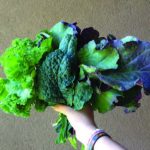 Next Post
Next Post